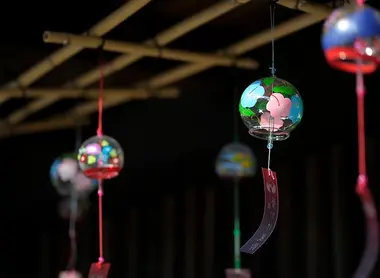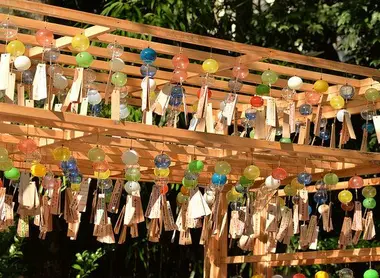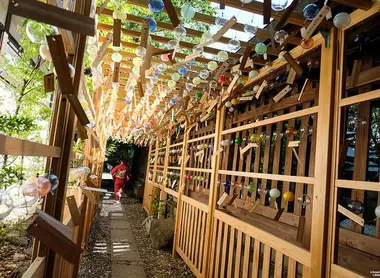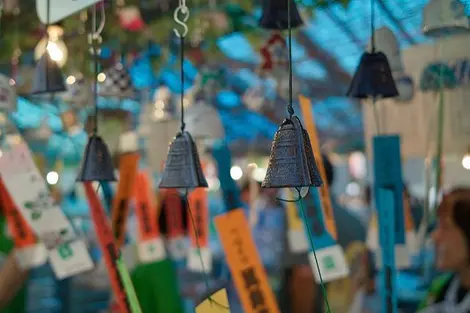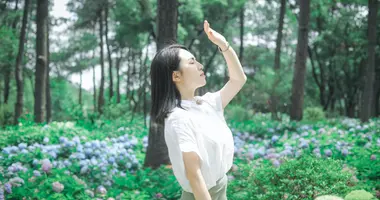Furin 風鈴
- Published on : 24/04/2017
- by : K.C.
- Youtube
Bells in the wind
Pleasant ringing echos the hot Japanese summer air: it is the sound of the furin, a unique traditional chime.
Furin is small chimes that the Japanese hang near doors and windows in the summer.
Origin
Arrived from China with Buddhism more than 2,000 years ago, furins were used to protect temples from evil spirits. Only families of nobles and samurai could afford these chimes, as the bronze used to make them was very expensive. Later, when glass was introduced to Japan, the working class could in turn benefit from it.
When air conditioning did not exist, the Japanese relaxed with furin; the ringing of these bells gives them a feeling of freshness. The sound of fûrin is also reminiscent of suzumushi, a species of cricket whose song announces the beginning of autumn and therefore the end of the hot weather.
To read: Going to Japan in summer: managing heat and humidity
Shapes and materials
The furin of traditional shapes are made of ceramic, but there are some made of metal, glass, or earthenware . Glass chimes were not produced until the Edo period (1603-1868) and are thus called Edo fūrin. From the main body comes the leaf, zetsu, on which is hung a small piece of paper, tansatsu. A haiku is usually inscribed on the tansatsu. The wind stirs the tanzaku, and the zetsu then rings the chime.
Read also: The Hozuki market
Furin Festivals
- The Summer Festival at Hikawa Temple (Saitama)
Hikawa Temple in Kawagoe, Saitama Prefecture, dates from the Kofun period (250-538). Its summer festival attracts a large number of visitors; more than 200,000 per year! There is no shortage of attractions: the alleys of furin, the sparkling river, and the "takemari art object" exhibition.
From July 1 to September 10, 2017; access: 1-407 Takahana-cho, Omiya-ku, Saitama, Saitama Prefecture 330−0803
- Furin matsuri at Ofusa Kannon Temple (Nara)
Kōyasan Shingonshū Bekkakuhonzan Kannonji Temple, more commonly known as Ofusa Kannon, is also known as the Temple of Roses and Fūrin. Every summer, the furin matsuri is held, where 2,500 chimes are hung within the temple grounds. The biannual rose festival (spring-autumn) welcomes you to 2,300 different varieties of roses.
From July 1 to August 31; access: 6-22 Ousa-cho, Kashihara-shi, Nara Prefecture 634-0075
